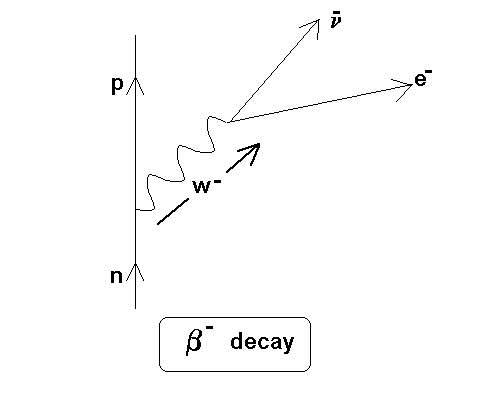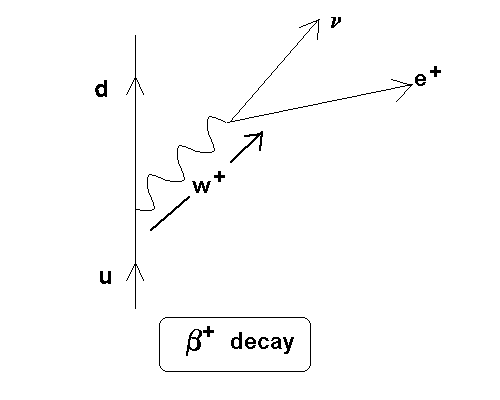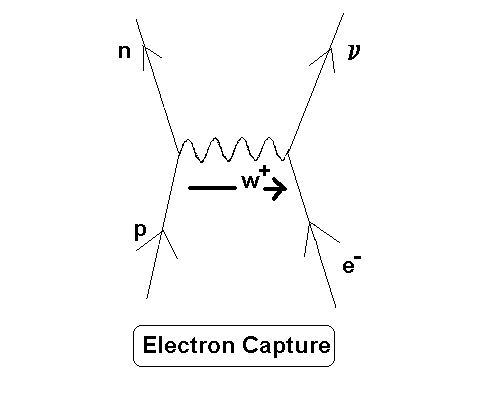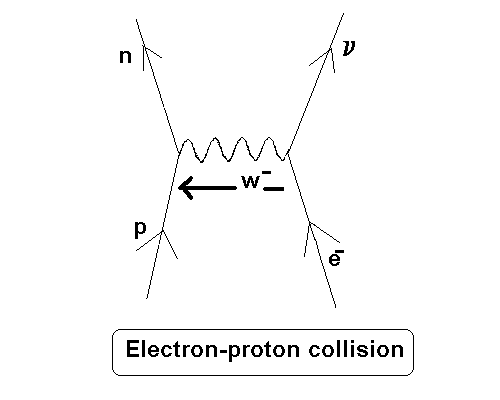    |
||||||

Feynman Diagrams |
||||||
|
Richard Feynman devised a short hand way of writing out particle interactions called Feynman Diagrams. For the AQA syllabus we only need to look at the diagrams relating to weak nuclear force interactions - they can be used for so much more, but you don't need to worry about that yet!. The interactions we have to consider involve b-particles and the transformation of a proton into a neutron or vice versa. Feynman diagrams are graphical ways to represent exchange forces. Each point at which the lines come together is called a vertex, and at each vertex we must conserve charge, baryon number and lepton number. They were developed by Richard Feynman to decribe the interactions in quantum electrodynamics (QED). The diagrams are used to describe a variety of particle interactions. They are a kind of space-time diagram, and were developed from Minkowski diagrams that are used in relativistic physics. The time axis usually points upward and the space axis to the right. (but Particle physicists often reverse that orientation!) .... but you do not have to worry about that! Particles are represented by lines with arrows to denote the direction of their travel, with antiparticles having their arrows reversed. Only lines entering or leaving the diagram represent observable particles. Virtual particles are represented by wavy or broken lines and have no arrows. The only
virtual particles you have to deal with are the W bosons. You have to know the following diagrams for AQA syllabus A. The number of diagrams required has been reduced on the syllabus in 2008 - therefore I have amended the ones online here. Click on a particle collision from the yellow box to jump to that interaction.
Here are two representations of beta decay: note that the decay of a particle start with that particle on the lower left - remember that time is the y axis (starts at the bottom left of the diagram!) The boson arrow goes from the proton as we consider the proton acting upon the electron in the capture.
Here the boson arrow goes from the electron side as the electron collides with the proton. The W and Z particles are the massive exchange particles which are involved in the nuclear weak interaction, the weak force between electrons and neutrinos are called Intermediate Vector Bosons. They were predicted by Weinberg, Salam, and Glashow in 1979 and measured at CERN in 1982. The exchange particle involved in the above weak nuclear reactions (nuclear because they happen in the nucleus) is the W-boson (remember them as 'w' for 'weak' - they carry charge as well as energy and so they also need a sign, there are two varieties the W- and the W+). Look carefully at the sign and direction the boson travels to see how its sign relates to the direction charge moves in the interaction. At each vertex there must be equal charge into and out of the point of interaction. Z-bosons are neutral and therefore are not involved in the proton - neutron interchanges that you have to know. Those that involve charge movement are w-boson interactions.
Remember
From your equations try to sketch out the Feynman diagrams. Remember you have to learn them. but if you understand how they are made up it is easier.... that's what I intend to do ... make sure you understand where they come from!! Then check your answers. Now revise the topic using my Flashcards:
|
||||||
 |
||||||










